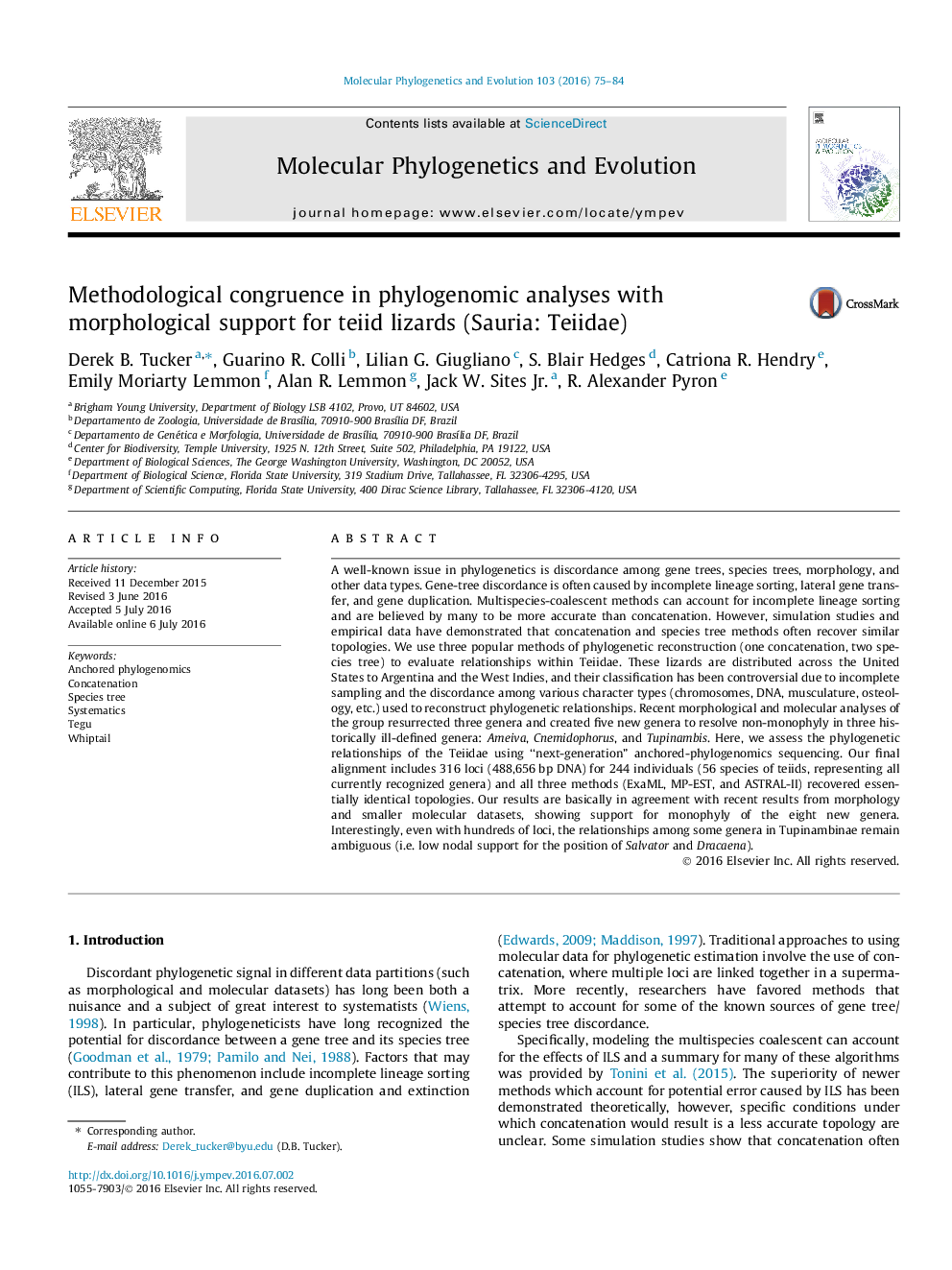| کد مقاله | کد نشریه | سال انتشار | مقاله انگلیسی | نسخه تمام متن |
|---|---|---|---|---|
| 2833630 | 1570794 | 2016 | 10 صفحه PDF | دانلود رایگان |

• A phylogenomic analysis of teiid lizards was investigated.
• Concatenation and species trees methods recover nearly identical topologies for generic and species level relationships.
• Molecular results largely support recent taxonomic changes proposed using morphology and smaller molecular datasets.
• Some generic relationships within Tupinambinae are still ambiguous even with nearly 500,000 bp of DNA.
A well-known issue in phylogenetics is discordance among gene trees, species trees, morphology, and other data types. Gene-tree discordance is often caused by incomplete lineage sorting, lateral gene transfer, and gene duplication. Multispecies-coalescent methods can account for incomplete lineage sorting and are believed by many to be more accurate than concatenation. However, simulation studies and empirical data have demonstrated that concatenation and species tree methods often recover similar topologies. We use three popular methods of phylogenetic reconstruction (one concatenation, two species tree) to evaluate relationships within Teiidae. These lizards are distributed across the United States to Argentina and the West Indies, and their classification has been controversial due to incomplete sampling and the discordance among various character types (chromosomes, DNA, musculature, osteology, etc.) used to reconstruct phylogenetic relationships. Recent morphological and molecular analyses of the group resurrected three genera and created five new genera to resolve non-monophyly in three historically ill-defined genera: Ameiva, Cnemidophorus, and Tupinambis. Here, we assess the phylogenetic relationships of the Teiidae using “next-generation” anchored-phylogenomics sequencing. Our final alignment includes 316 loci (488,656 bp DNA) for 244 individuals (56 species of teiids, representing all currently recognized genera) and all three methods (ExaML, MP-EST, and ASTRAL-II) recovered essentially identical topologies. Our results are basically in agreement with recent results from morphology and smaller molecular datasets, showing support for monophyly of the eight new genera. Interestingly, even with hundreds of loci, the relationships among some genera in Tupinambinae remain ambiguous (i.e. low nodal support for the position of Salvator and Dracaena).
Figure optionsDownload as PowerPoint slide
Journal: Molecular Phylogenetics and Evolution - Volume 103, October 2016, Pages 75–84